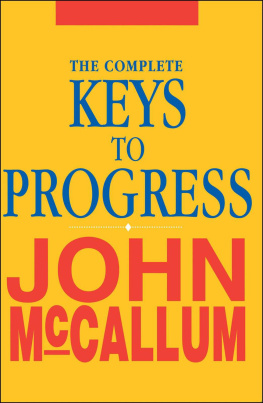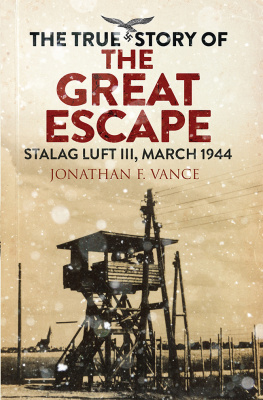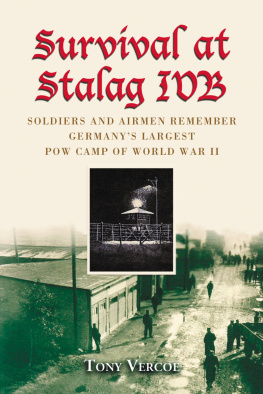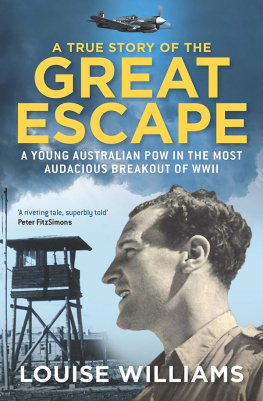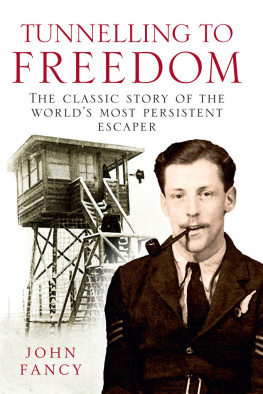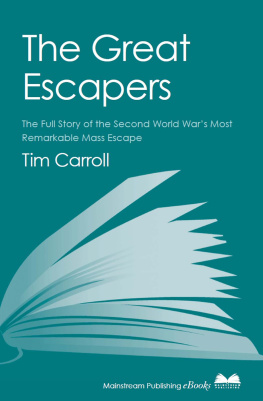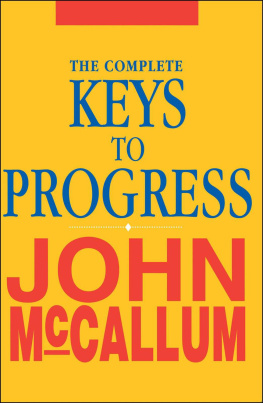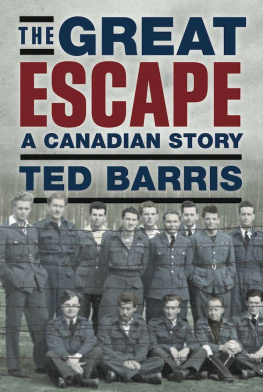
This ebook edition published in 2012 by
Birlinn Limited
West Newington House
Newington Road
Edinburgh
EH9 1QS
www.birlinn.co.uk
Copyright the Estate of John McCallum 2005
Foreword copyright George Robertson 2005
Introduction copyright Trevor Royle 2012
About My Father copyright Ken McCallum 2012
The moral right of John McCallum to be identified as the author of this work has been asserted by him in accordance with the Copyright, Designs and Patents Act 1988
All rights reserved. No part of this publication may be reproduced, stored, or transmitted in any form without the express written permission of the publisher.
eBook ISBN: 978-0-85790-234-4
Print ISBN: 978-1-84341-060-7
Version 1.0
British Library Cataloguing-in-Publication Data
A catalogue record for this book is available from the British Library
Foreword
The Rt Hon. the Lord Robertson of Port Ellen KT GCMG Hon FRSE PC (Secretary of State for Defence 199799, Secretary General of NATO 19992003)
We all know the great war stories the deeds of inspirational bravery which make movies to be seen over and over again. We recognise and revere the great war leaders and personalities. Their names are in lights, on books and on statues. We have whole libraries devoted to the origins of wars and the impact the conflicts have had on our history.
But wars affect ordinary people in extraordinary ways as well. Lives are disrupted, affected and even ended by forces far from the lives of the man or woman in the street. People are taken from their peaceful way of life and faced with challenges they could never imagine. Some of the greatest stories about the ability of accidental heroes to rise to dizzy heights of achievement are never heard.
Here is one such story: three telephone engineers are plucked from obscurity and thrown into a maelstrom of adventure. The story has all the ingredients of a modern airport novel courage, daring, sex, love, cunning, innocence, humour and incredible luck. But this is not fiction it is for real. The three Scottish heroes of the action then returned to obscurity after their amazing exploits. For decades, because of the Official Secrets Act, their story could not be told. Luckily, sixty years later, one of them has published this account.
When I read this book in manuscript, I could not stop turning the pages. The early events made the old Scottish word gallus come to mind, but as events unfold, you realise how determination, resourcefulness and sheer bravado can move mountains or at least the bars of a prisoner of war camp.
Those of us who, almost every Christmas, watch The Great Escape, would never have guessed that nearby three Scottish guys had been doing the same thing on the same day. And unlike the more famous escapees from Stalag Luft Drei, these three made it home.
At this point in history, anniversaries of the First and Second World Wars have brought home to a new generation how much we owe to those who gave up their comfortable lives so that we might live in peace and safety. Old men, and women too, with blazers and medals nowadays leaning on sticks are living legends. Ordinary people, like John McCallum, Jimmy ONeill and Joe Harkin were called upon to do extraordinary things. And, collectively, they guaranteed our precious freedom.
This is a great tale with a deep message. Read, enjoy and reflect.
George Robertson
Introduction
Given the millions of people who served in uniform during the Second World War it is not surprising that so many ended up as prisoners of the enemy. The exact numbers will never be known as some combatant nations were tardy both about keeping records and ensuring the well-being of prisoners-of-war (or POWs as they are known) but the figure must run into several million. During the first campaigns in Poland in 1939 and in France the following year the Germans found themselves having to cope with over 2 million enemy POWs, and the British Expeditionary Force left behind 50,000 soldiers during the retreat from Dunkirk during the same period. Amongst them were John McCallum and his mates from Glasgow. Later in the conflict there were equally heavy losses during the fighting in North Africa, the Balkans, France and north-west Europe.
In theory the conditions meted out to POWs were governed by the Geneva Convention of 1929, which superseded the original Hague Convention of 1907 on the treatment of prisoners in time of conflict. This was a wide-ranging piece of legislation which contained 97 articles outlining the work of the International Red Cross as a neutral agency and spelled out the rights and treatment of prisoners-of-war. The main terms of the Geneva Convention were that prisoners were to be removed promptly from the battlefield; if wounded they were to be given adequate medical care; once in captivity they were to be treated and fed no worse than troops of the host nation; under interrogation they could refuse to provide any information other than name, rank and service number; freedom of religious worship was allowed; International Red Cross inspection teams were permitted to visit permanent camps and escape attempts were to be punished by one months solitary confinement.
The convention was agreed by all the major powers except Japan, which signed but did not ratify, and the Soviet Union, which did not sign at all on the grounds that no soldier in the countrys armed forces would ever allow themselves to be taken prisoner. That failure was to have far-ranging consequences during the course of the conflict. On the Eastern Front, captured German soldiers were subjected to casual brutality, provision of food, and medical care was basic, if offered at all, and living conditions were squalid. Mass executions were commonplace. By the same token many senior German officers argued that as the Soviet Union had not signed the Geneva Convention the German Army was not bound by its terms and the treatment of captured Red Army soldiers was equally appalling. Most frontline units in the fanatical Waffen SS had a rule that prisoners were not to be taken, basing their rationale on the Nazi-inspired argument that Slav peoples were sub-human, but they were not alone in encouraging the execution of prisoners. During the retreat to Dunkirk over a hundred soldiers in the Royal Norfolk Regiment were machine-gunned after surrendering, and of the 10,000 RAF aircrew who survived being shot down over Germany several were lynched by angry mobs of civilians. The worst incident of this kind was the so-called Great Escape of March 1944, when fifty British prisoners-of-war were executed following a mass breakout from the Stalag Luft III POW camp in Lower Silesia.
However, by far the most horrible conditions faced by prisoners-of-war were in South-east Asia during the fighting against Japan. Not only did the Japanese army not recognise the Geneva Convention, but a conviction had grown up that defeat in battle was the ultimate disgrace for a trained fighting soldier and had to be avoided at all costs. That belief led to an almost hysterical refusal to surrender even when the position was hopeless, and it also lay behind the inhumane treatment of Allied POWs. At the beginning of 1942 80,000 British, Indian and Australian troops surrendered to the Japanese following the fall of Singapore. From the outset no attempt was made to treat them with any semblance of humanity. Food and shelter were restricted to the bare minimum to sustain life, and most of those taken prisoner were used as forced labour on the construction of the notorious BurmaSiam railway, the supply route that linked Thailand to Burma. The line had to be cut through 260 miles of mountainous and inhospitable jungle and in addition to the unhealthy and dangerous conditions the prisoners-of-war had to work without adequate food or medical supplies and were subjected to extreme cruelty by the Japanese guards. A sign at the base camp at Thanbyuzayat welcomed new arrivals with the warning: You are the remnants of a decadent white race and fragments of a rabble army. This railway will go through even if your bodies are to be used as sleepers. Over 12,000 POWs died on the railway and many more were afflicted by physical and mental problems long after the war.
Next page

